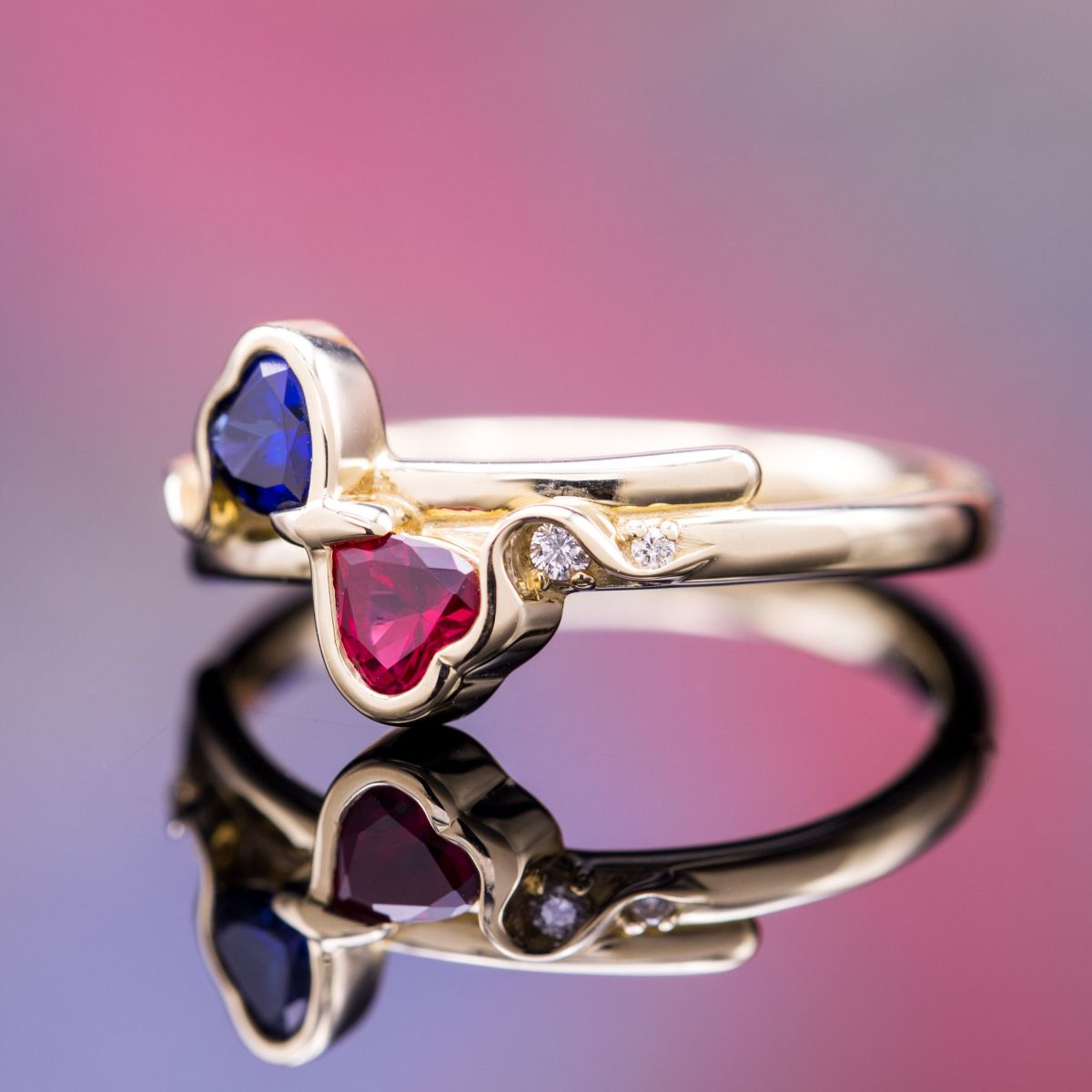How Do Rubies and Sapphires Form?
The geological conditions in which rubies and sapphires form are rare and extreme. Learn how these popular gems develop and how they get their colors.
4 Minute Read
What are Rubies and Sapphires?
Did you know that ruby and sapphire are actually the same mineral, corundum? Among natural minerals, only diamond has a greater hardness. Not surprisingly, when combined with fantastic colors, rubies and sapphires are some of the most highly desired gemstones.
So, if ruby and sapphire are the same mineral, why do we distinguish them? They share the same gemological properties with only one distinction: rubies are gem-quality red corundum. All other colors of gem-quality corundum are considered sapphires. Non-gem quality corundum, like that used commercially as an abrasive, is simply called corundum.
How Does Corundum Form?
Corundum (chemical formula Al2O3) crystalizes in slow-cooling igneous or metamorphic rocks. The slower the rock cools, the larger the crystal can grow.
Corundum won’t develop in just any igneous rock. The right ingredients must be present. In particular, the melt has to be rich in aluminum (Al) but devoid of silicon (Si), one of the most common elements in the Earth’s crust.
Metamorphic rocks are also an important source of corundum. The mineral forms in metamorphosed ancient sea beds, where aluminum-rich thermal waters ran through the rock. These marbles supply some…
Addison Rice
A geologist, environmental engineer and Caltech graduate, Addison’s interest in the mesmerizing and beautiful results of earth’s geological processes began in her elementary school’s environmental club. When she isn’t writing about gems and minerals, Addison spends winters studying ancient climates in Iceland and summers hiking the Colorado Rockies.
Related Articles
Sapphire Value, Price, and Jewelry Information
Ruby Gemstone Value, Price & Jewelry Insights
Corundum Value, Price, and Jewelry Information
Gem Origin Opinions: When Gemology Labs Agree to Disagree on Sapphire Origins
Latest Articles
800 Years of Mogok: A Celebration in Tenuous Times
What is the Average Gemstone Faceting Yield?
Pyroxmangite Value, Price, and Jewelry Information
How to Identify Emerald Simulants and Synthetics
Never Stop Learning
When you join the IGS community, you get trusted diamond & gemstone information when you need it.
Get Gemology Insights
Get started with the International Gem Society’s free guide to gemstone identification. Join our weekly newsletter & get a free copy of the Gem ID Checklist!
